
Top Hermes Handbags to Spruce up Your Wardrobe in 2025
In 1837, with the first opening of a Harness workshop of Thierry Hermès, Hermes was founded in Paris to craft
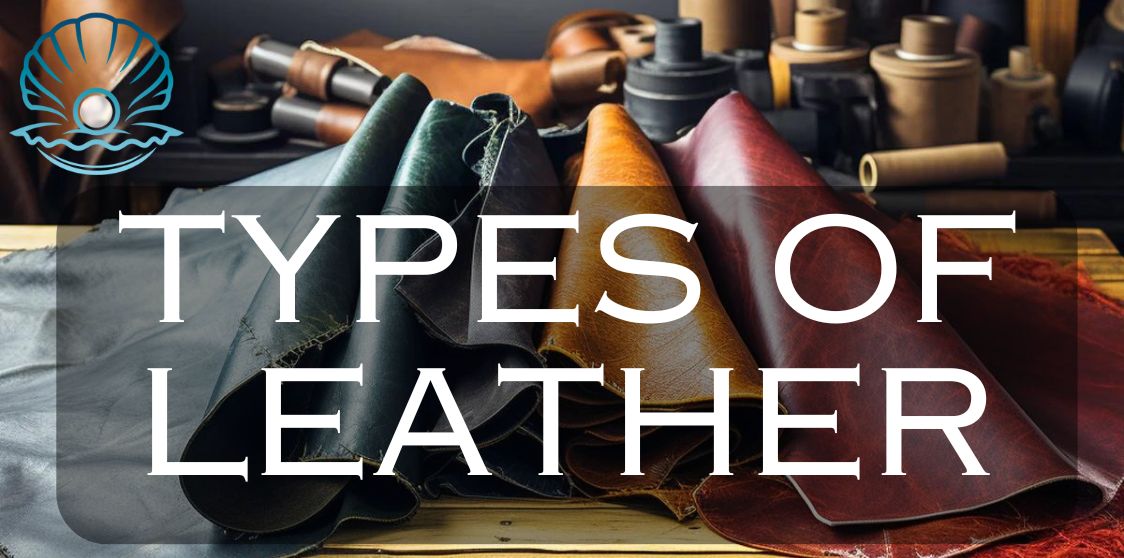
Leather is the king of fabrics. It is resilient, durable, and oozes elegance like no other. the use of leather predates recorded history and there are different types and grades of leather available. Different types of leather come from the hides of animals including lambs, goats, cows, and sheep. Each type of leather carries with it, its own distinct characteristics, advantages, and disadvantages.
As leather comes at a high price tag, it is best to know about the different kinds of leather and their quality before purchasing. However, while shopping for leather, identifying the different types of leather might be a bit challenging. More so if you lack basic knowledge of leather. In this article, we highlight 5 types of leather, and tell you about their advantages and disadvantages.
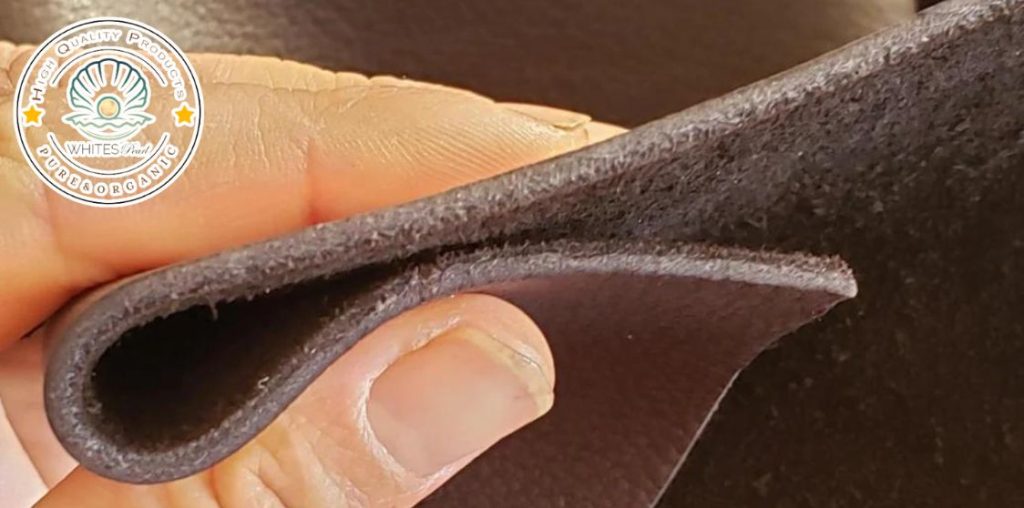
The top layer of the hide, residing beneath the hair, is full-grain leather. It is called full-grain leather because it contains the entire grain. Full-grain leather is of the most excellent grade and derives its properties from the skin of the animal it comes from. This leather looks and feels the most authentic as it hasn’t been subject to trimming or shaving.
No buffing and sanding are done to the leather. This type of leather is tougher and harder as compared to other types of leather. As it is also harder to work with, the end product of full-grain leather harbors a hefty price tag. Time adds to the elegance of full-grain leather as it absorbs oil and develops a patina. In other words, the more you use this type of leather, the more beautiful it becomes.
The quality of this leather is one of the reasons why it’s so expensive and well-liked. The scent of full grain sets it apart from other types of leather. Its authentic aroma attracts leather connoisseurs, compelling them to empty their wallets. As mentioned before, this kind of leather hasn’t been subject to sanding sure to which there will be some blemishes, scratches, and imperfections on its surface. Even though high-end manufacturers tend to avoid leather with obvious defects, some of the best quality full-grain leather is bound to have minor imperfections.
This type of leather is also quite sturdy and long-lasting. It cannot be damaged easily as it consists of tightly packed fibers that make it strong, allowing it to last for decades. Full-grain leather is mostly used to manufacture heavy-duty items like utility belts and weapon holsters. However, it can also be used for dress shows, dress belts, work boots, furniture, duffle bags, wallets, briefcases, and many other products. Its durability and resilience make it an ideal manufacturing material for goods that see heavy and tough usage and require long-lasting performance.
Full-grain leather harbors distinct properties that make it so much more valuable. Its natural beauty is one of the reasons why this leather carries a hefty price tag. The surface of the leather shows every scratch and defect, giving it a beautiful appearance. This type of leather is also quite tough and hardy, making it an ideal leather type for bags and elegant furniture. The products made from full grain leather will last for years, daces even if taken care of. As the leather ages, it develops a rich patina, enhancing its overall appearance.
Full-grain leather is costly compared to other types of leather. As it is harder for craftsmen to work with, the products made of full-grain leather bear a hefty price tag. Moreover, the hardness of this type of leather makes it highly unsuitable for products that require suppleness as well as flexibility. Unlike some leather, full-grain leather is not resistant to stains and is not very consistent due to natural defects and surface distortion.
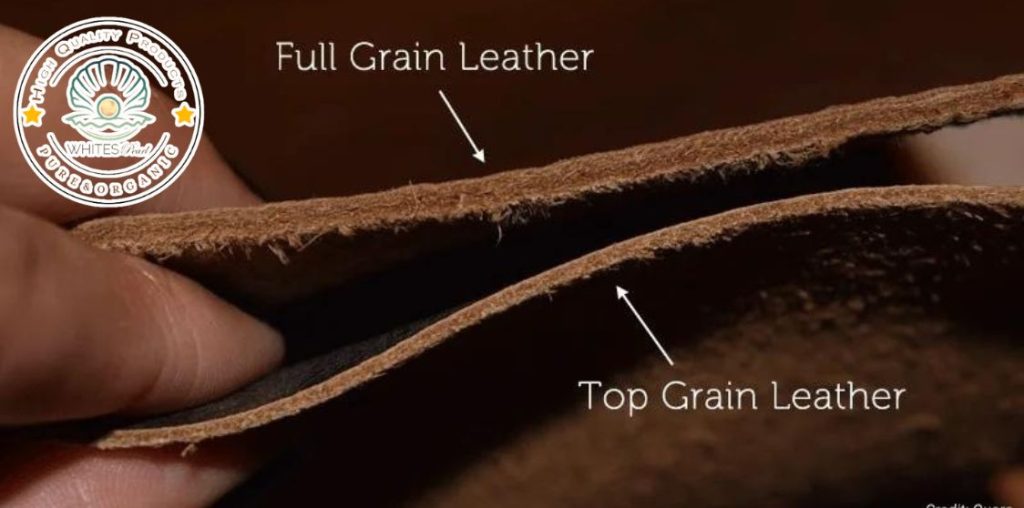
Even though top-grain leather is nearly indistinguishable from full-grain leather, it harbors its own characteristics as well as properties. Top grain leather is the second layer of the hide. The key distinction between full grain and top grain leather is that top grain leather is sanded or buffed in order to remove inconsistencies and flaws. As it is subject to sanding, top-grain leather is more supple and is also comfortable to work with. It is also less costly than full-grain leather and is void of scars, defects, wrinkles, and blemishes. When creating items from this type of leather, leather finishes, and dyes are also added.
When it comes to quality, top-grain leather is the second highest grade of leather, after full-grain. As top-grain leather lacks the outermost layer of the hide, it is void of natural fibers that add to the durability of leather. However, on the other hand, this leather is void of defects as well as discolorations, giving it a consistent color and pattern.
Top grain leather is also lauded for its flexibility and gentleness which makes it an ideal leather for crafting luxury items, such as handbags, wallets, and footwear. All in all, top-grain leather has a homogeneous appearance, is soft and pliable. It is also inexpensive as compared to full-grain leather. However, it is not as durable and wears out faster than full-grain leather.
The major advantage of top-grain leather is that it is quite easy to work with and after processing provides a consistent finish. Even though it is less durable as compared to full-grain leather, it however still lasts a lot longer than other low-grade lathers. As it is easy to work with, top-grain leather is quite inexpensive as compared to full-grain leather and can be dyed and also patterned to enhance appearance.
This leather is less durable and has lower breathability as in order to remove scars and defects, top grain leather is subjected to sanding and buffering. It also cannot absorb body oils and does not develop a patina with time. Instead, as time progresses, it gets brittle and will crack if not taken care of. Moreover, it lacks the personality that is harbored by full grain that preserves the story of the being it comes from.
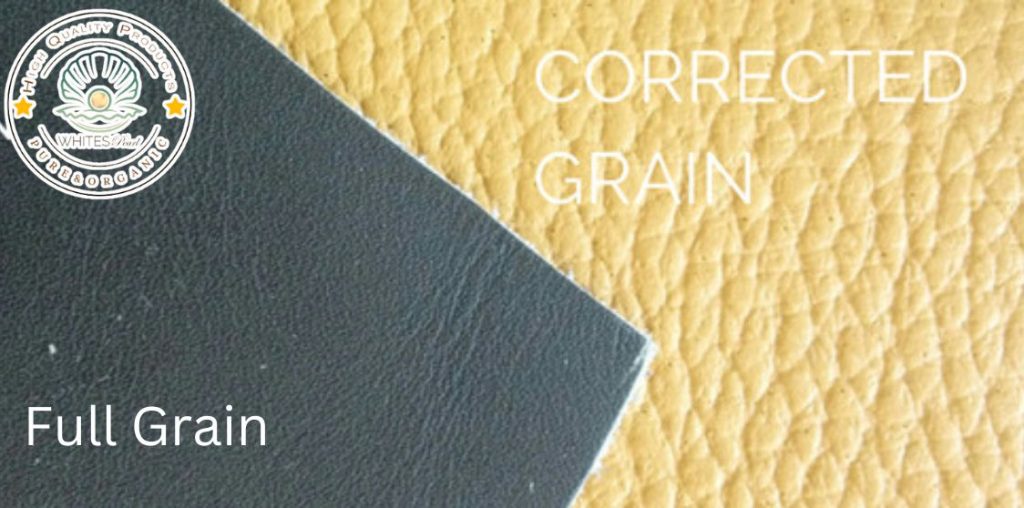
Genuine leather is also regraded and corrected leather or split leather. As this type of leather resides at the end of the chain, it is thicker and more robust among different types of leather. To provide a more consistent finish, the leather is processed and is subject to both sanding and baffling to smooth out its surface. The final look of genuine leather is achieved via embossing, spray painting, dying, or stamping. Even though this type of leather is low grade, it still harbors characteristics that make it a popular leather. It harbors a uniform design, is softer, more bendable, and is more affordable as compared to full-grain and top-grain leather. It also costs a lot less to produce.
Corrected leather possesses different grades which depend on the degree of correction required on the surface of the hides. Genuine leather that is less corrected had better grades. Even though corrected leather is considered to be almost as durable as full-grain leather, buffing of the surface removes the natural softness of leather. Moreover, patina, which is a characteristic of full-grain leather, won’t appear on corrected leather.
Corrected leather harbors a wide variety of looks that depend on the required final product. The grain that is embossed on stamped on the buffed leather can vary from the original hide pattern and the colors can also vary depending on the dye and finish used. All in all, corrected leather does not have a consistent look.
One of the main advantages of corrected leather is that it prevents the wastage of leather. As corrected leather allows for disfigured and scarred hides to be sold, and manufactured into leather, nothing is wasted. Moreover, it is also quite affordable as well as durable. Furthermore, as corrected leather comes in a variety of finishes and colors, it is appealing to a wide variety of buyers.
As processing is required to correct the grain, corrected leather is not less supple and breathable. This kind of leather is also prone to cracking with time, feels kind of unnatural as compared to full grain and top grain leather, and also does not develop a patina with time.
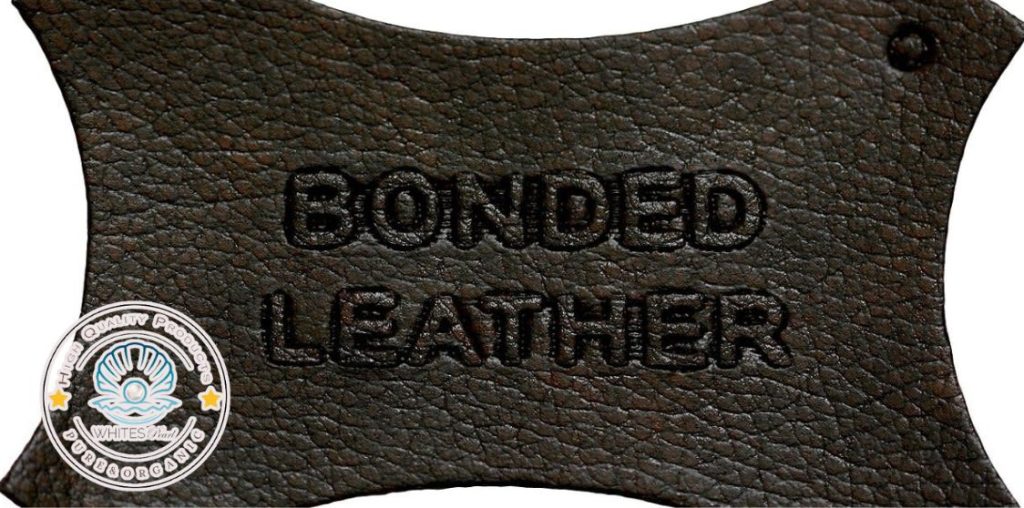
Bonded leather is also regarded as blended or reconstituted leather. This type of leather is created when hide scraps and cut-offs are finely crushed and combined with a filler. In the end, a fiber sheet is used in order to stamp the leather with a polyurethane or latex finish. Bonded leather is the least expensive among the different types of leather. During the manufacturing process of bonded leather, manufacturers, utilize different percentages of leather., there it is difficult to predict the performance of this type of leather. Some bonded leather is durable some are not. It is however prone to cracking and wearing out quickly as compared to the above-mentioned three types of leather.
When it comes to appearance, bonded leather is quite well at mimicking real leather because it possesses both the look and smell of real leather. This kind of leather is available in a vast variety of colors, textures, and finishes. Unlike real leather, bonded leather is warm to the touch in the summer months and cool to the touch in winter.
Furthermore, it does not develop a patina as it ages, instead, it tends to peel off and crack if not taken care of properly. Normally, this kind of leather is used in the manufacturing of reasonably priced furniture, book bindings, bags, clothing, belts, and office supplies. Due to its limited durability, bonded leather is not suitable for luxury and high-end products.
One of the major advantages of bonded leather is that it is environmentally friendly as it makes use of scrap leather which would otherwise go to landfill as litter. It is also cheaper as compared to quality leather and is available in a variety of colors and looks that suit the budget and taste of different kinds of buyers.
Even though bonded leather is quite cheap it is not as durable as full-grain or top leather and is less breathable. The leather also feels sticky during the summer months. If you happened to purchase an upholstered sofa made of bonded leather, even though its initial price would be reasonable, it will be way costlier in the long run. Once the leather peels or splits, there is no repairing it and you will need to reupholster the whole couch.
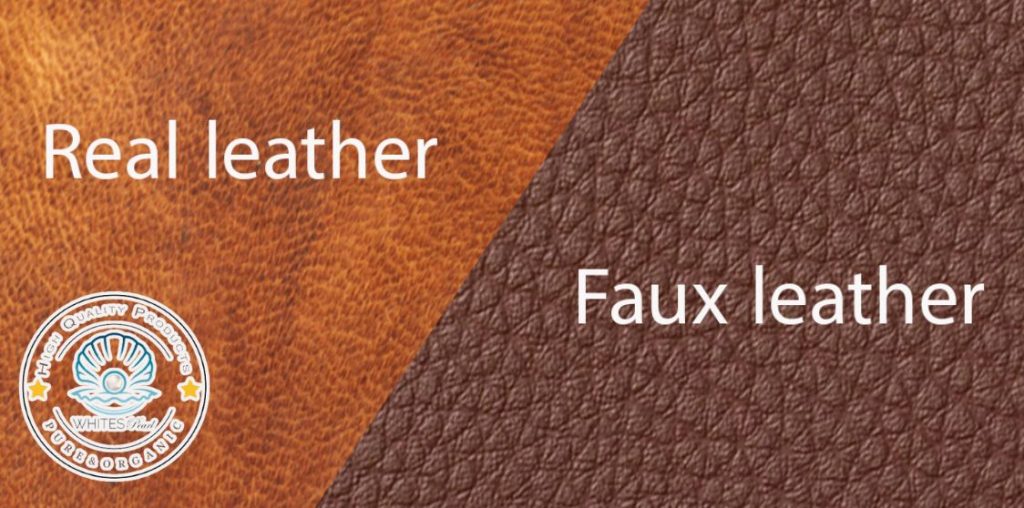
Artificially created leather is regarded as faux leather. This leather is a famous alternative due to its cost and also moral considerations. Faux leather is entirely artificial, and no animal product is used in its manufacturing. Instead, synthetic materials are used to produce it. This type of leather can withstand the elements of time and lasts longer. During the manufacturing process, faux leather can be shaped and dyed into w wide array of variations that suit various aesthetic needs.
Faux leather is mainly composed of PVC or polyurethane and is durable, flexible as well as simple to care for. They are mostly commonly used for making furniture and car interiors. However, this leather can get sticky, and as it is composed of materials that are not biodegradable, faux leather is considered a hazard to the environment.
Faux leather possesses the same look and feel as real leather, all the while being more affordable. It is also preferred by most people as no animals are harmed in its manufacturing. Moreover, as faux leather is manufactured via a machine it harbors consistent colors and uniform appearance throughout and results in a uniform product. High-quality faux leather can last for a long time, provided it is well cared for.
Low-quality faux leather has a lower lifespan compared to real leather. It easily cracks and splits as compared to real leather and also becomes more and more uncomfortable as time progresses. Unlike real leather, faux leather does not develop patina. It is also not breathable and hence becomes uncomfortable when you sweat. The smell of faux leather is kind of unpleasant and when it’s hot it tends to get sticky. If used in clothing, it does not keep the wearer warm as compared to real leather.
Leather comes in different shapes, sizes, colors, and durability. The five main types of leather are full grain leather, top grain leather, corrected/genuine leather, bonded leather, and faux leather. In today’s day and time even though, real leather is considered a luxury, more and more people are starting to prefer faux leather and its manufacturing does to involve harming animals. Faux leather however does not possess the feel of real leather and with time starts to develop cracks and splits that are difficult to repair.
Artificial or faux leather is also not environmentally friendly as it consists of materials that are not biodegradable. On the other hand, fill grain leather is premium leather that is durable, possessing the ability to last for decades, if well taken care of, and develops a rich patina over time. Full-grain leather is the most expensive of the bunch as it is quite hard to work with. It is used in the manufacturing of products that suffer through heavy and tough usage.

In 1837, with the first opening of a Harness workshop of Thierry Hermès, Hermes was founded in Paris to craft
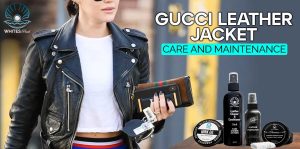
Cleaning and maintaining the original form of your leather jacket is a very tricky thing to manage on your own.
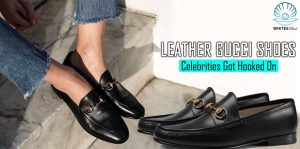
With countless articles crowding the fashion industry and blinding the sight of even Savvy shoppers, finding an iconic yet worth-the-splurge

In the array of it-bags, Louis Vuitton Speedy is the most coveted addition. With a constant provider of timeless elegance